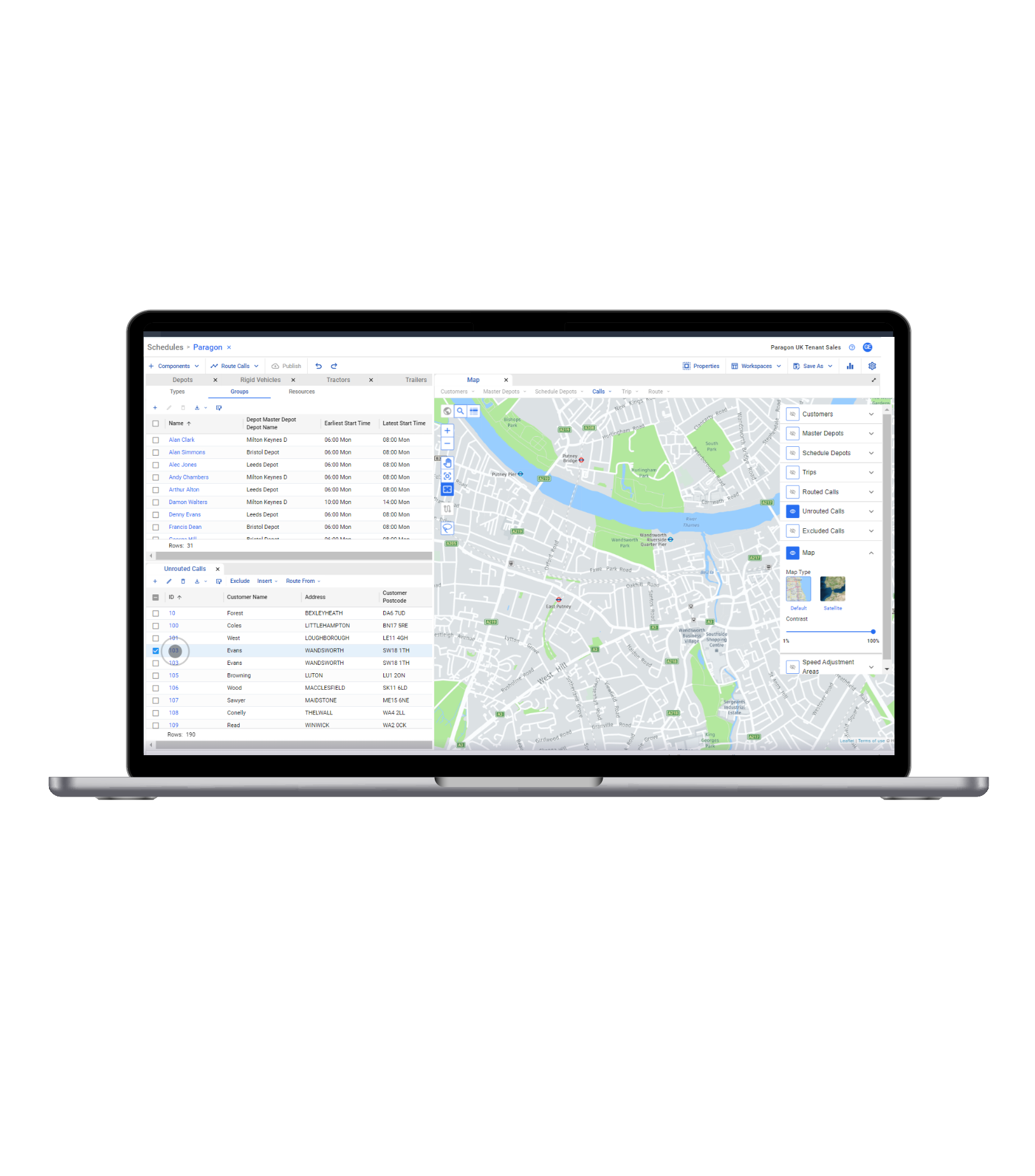Use Route Planning Software To Ace Your Cost To Serve Analysis
Use Route Planning Software To Ace Your Cost To Serve Analysis
Use Route Planning Software To Ace Your Cost To Serve Analysis
3 Dez 2020
 Aptean Staff Writer
Aptean Staff Writer 
Distributors have grown revenue by about 7.5% per year since the 2008 recession but margins have remained well below pre-2008 levels, according to a McKinsey survey of 220 distributors.
It’s absolutely essential to understand the distributor’s cost to serve individual customers in order to make smarter decisions about pricing and service commitments when margins are thin.
Many distributors simply don’t know their cost to serve. They don’t have the ability to assess truck delivery costs — a huge component of total operating costs. Small and mid-sized distributors continue to route trucks using manual or semi-automated methods but it’s difficult to accurately account for all of the variables that impact delivery costs without advanced route planning software. For instance, to perform a true cost to serve analysis, you’d need to know:
Where are the new delivery points?
When are they open to receive deliveries?
What is a normal delivery size?
How will the new drops fit with the existing schedule?
Even the most turbo-charged spreadsheet can’t handle the innate complexity of such an analysis, so the real costs remain elusive. Today’s margin-challenged distributors simply can’t afford to guesstimate delivery costs.
Advanced route planning software is a key to computing cost-to-serve data. Whether you’re contemplating potential new customers or changes requested by an existing customer, the route modeling capabilities within such software allow you to overlay new drops onto an existing route plan and calculate the exact impact of route changes on delivery costs and margins. Once all the data is loaded, the cost to serve analysis is done automatically in seconds.
This modeling capability is just one feature of route optimization software. The software can help distributors reduce fleet operating costs by 10–30% when fully leveraged. Many distributors still cling to old-school, largely manual route management practices, forgoing the margin-enhancing benefits of digitization.
McKinsey, in a 2019 paper, The Coming Shakeout in Industrial Distribution, noted, “Digital advances are game changers in the distribution industry. But most distributors are still in the early innings of digital adoption and lag other logistics industries.”
Pricing is Key
Knowing your cost to serve value leads to fair and accurate pricing. Pricing is by far the most powerful lever for improving overall margins for a distributor. A 1% price increase has more impact on bottom-line margins than a 1% volume increase or a 1% reduction in Selling, General and Administrative (SG&A) costs, according to McKinsey. That 1% price increase drives a 22% increase in EBITDA. An average distributor would need to grow sales 6% with no rise in operating expenses to get the same impact.
Route planning software not only helps you determine a fair price -it can help sell the new price as well. The software produces objective, defensible cost data that takes the emotion out of a pricing discussion, assuming you and your customer agree on the delivery parameters.
It’s empowering for a distributor to say to a customer, “Before the changes, we ran 16,000 miles per week with 40 trucks and 48 driver shifts, but the new deliveries will require that we run 20,000 miles per week with 50 trucks and 60 driver shifts. We’ve modeled the related increase in costs, and here’s the evidence.”
The McKinsey data reveals that pricing is well down the list of the things that customers value most from distributors. It’s actually valued less than fast, on-time delivery services.
Translation: Pricing should not stand in the way of growing your business when you arm your sales team with the tools to accurately assess the cost to serve.
Knowing the Distributor Cost to Serve Can Lower Your Price, but Still Enhance Your Margin
The modeling capability of advanced route planning software not only helps justify price increases, it can actually identify efficiency-driving changes that reduce your cost to serve and allow you to pass on those savings to customers.
Aptean Routing & Scheduling software powers the delivery operation of a very large distributor of produce to a national, quick-serve restaurant chain. Our software regularly models routes to make recommendations, like changing the day of delivery or going from delivering six pallets three times a week to delivering nine pallets twice a week. Some of these changes could even eliminate a truck from the fleet. This distributor takes these recommendations to its restaurant chain client and, upon approval, implements the changes and shares the cost savings with the restaurant.
“For years, we were delivering to certain locations on Tuesdays and Thursdays at 6 a.m.,” said the distributor’s VP of Transportation. “This delivery constraint limited our flexibility to create the most efficient route, but we never challenged the requirement until the software flagged it. When we approached the customer and explained the cost upside for them in being flexible, they agreed to a 5 a.m. to 8 a.m. delivery window. When you introduce flexibility, the software’s algorithm can deliver huge cost efficiencies.”
Knowing Your Cost to Serve and Manage Your Business Better
It changes the way you manage when you are confident that you know your distributor cost to serve individual customers. You can:
Identify your least profitable customers and either adjust pricing or change them out for newer, more profitable customers
Assign people and assets to your most profitable and fastest-growing segments
Confidently suggest pricing adjustments with clear, objective data
Avoid over-servicing customers and the resulting margin erosion
Suggest alternate delivery frequencies and times and share the resulting cost savings with your customers
Route optimization software unlocks these and other advantages at a very reasonable cost. ROI on routing software is typically achieved in 3–12 months, with the initial savings repeated and compounded each subsequent year. The AKI Group has achieved annual savings of more than $1 million by automating its in-house transport operations. To estimate what you could save through route optimization, check out our new fleet savings calculator.
Talk to one of our routing experts at Aptean to learn more about making route planning software a key component of your own digital transformation.
Haben Sie die Produkttour ausprobiert und sind Sie bereit, loszulegen?
Buchen Sie noch heute Ihre vollständige Demo mit unserem Team, um zu sehen, wie unsere fortschrittliche Routing-Software Ihnen helfen kann, die Leistung zu steigern.



